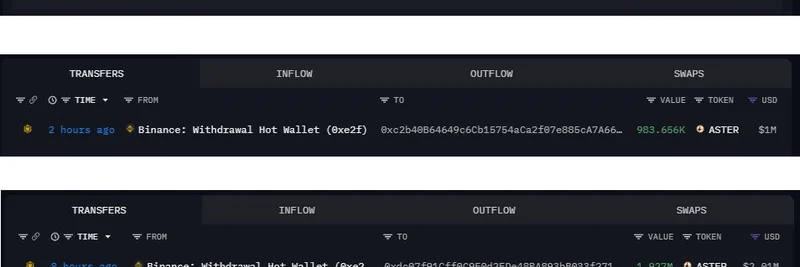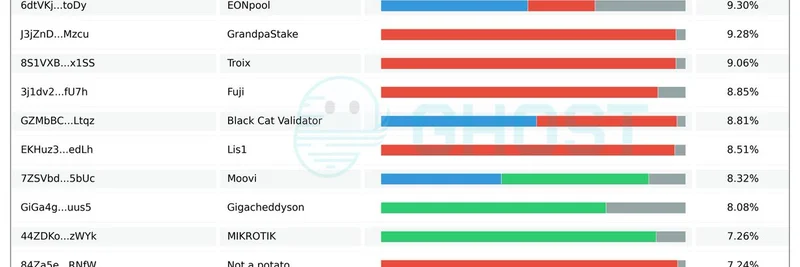Hey there, crypto fans! If you're scrolling through X (formerly Twitter) and caught wind of the latest buzz from BSCNews, you're in the right spot. Their recent post spotlighted VeChain's Hayabusa upgrade, calling it potentially the biggest yet for the project. As someone who's been deep in the crypto world, I thought it'd be cool to break this down for you—especially since at Meme Insider, we love dissecting how big chain upgrades can ripple into the wild world of meme tokens.
What's the Hayabusa Upgrade All About?
VeChain, or more precisely its blockchain VeChainThor, is gearing up for a major evolution with the Hayabusa upgrade. Named after the super-fast peregrine falcon (hayabusa in Japanese), this update is all about speed, precision, and making the network more decentralized. It's the second phase in VeChain's Renaissance roadmap, which is basically their plan to level up the blockchain for real-world uses like tracking supply chains or managing real-world assets.
Think of VeChain as a blockchain that's been around since 2015, focusing on enterprise stuff—like partnering with big names such as Walmart or UFC. But now, they're shifting gears from their old Proof-of-Authority (PoA) system, where only a few trusted nodes run the show, to Delegated Proof-of-Stake (DPoS). In simple terms, PoA is like a small club deciding everything, while DPoS lets more people (token holders) vote and participate, making it fairer and harder to mess with.
The upgrade kicked off with a proposal on VeVote (their governance platform) back in mid-August 2025, and it got unanimous yes-votes super quick. Testnet went live in early September for devs to poke around, and the full mainnet rollout is eyeing late December 2025. If you're into timelines, that's Q4 2025.
Breaking Down the Tokenomics Shake-Up
Tokenomics—that's just a fancy word for how a token's economy works, like supply, rewards, and incentives. Hayabusa is flipping the script on VeChain's dual-token setup: VET (the main governance token) and VTHO (the gas token for paying fees).
Here's the scoop on the changes:
- No More Free VTHO for Holding VET: Previously, just hodling VET would passively generate VTHO. That's gone now, which helps cut down on inflation (too many tokens flooding the market). It's a move toward making the tokens scarcer and potentially more valuable over time.
- Staking Takes Center Stage: Rewards are now tied to staking—locking up your tokens to support the network. Through the StarGate program, you can stake as little as 10,000 VET for a Dawn Node and earn from a bonus pool of over 5 billion VTHO spread out over six months.
- Validator and Delegator Roles: Got 25 million VET? You can become a full validator and earn big. Otherwise, delegate your stake to someone else and share the rewards. It's all performance-based, so good validators get more.
- Burning and Redistribution: Transaction fees in VTHO get partially burned (destroyed forever) and partially given back to stakers. This ties everything to actual network use—if more people transact, stakers win more.
Right now, VET's chilling around $0.023, but analysts like Michaël van de Poppe are eyeing a breakout if these changes boost demand. For meme token folks, this is a reminder: solid tokenomics can turn a fun project into a sustainable one, unlike some pump-and-dump schemes.
New Features to Watch
Beyond the economics, Hayabusa packs some tech goodies:
- Broader Participation in DPoS: Anyone with enough VET can validate or delegate, spreading power around and beefing up security. It's like democratizing the blockchain.
- Wallet and Partner Integrations: VeWorld wallet handles staking, BitGo offers insured custody (up to $250 million!), and spots like Crypto.com provide liquidity. Keyrock's jumping in as a validator too.
- Tech Upgrades: Better compatibility with Ethereum Virtual Machine (EVM) and JSON-RPC means easier cross-chain vibes, perfect for DeFi apps or linking up with other ecosystems.
VeChain's already got over 4 million users via tools like VeBetterDAO, so this could supercharge that growth.
Why This Matters for the Crypto Scene (and Meme Tokens)
While VeChain isn't your typical meme token—it's more enterprise-focused—these upgrades offer killer lessons for meme projects. In the meme world, where hype often trumps tech, adopting stuff like DPoS could add real utility and longevity. Imagine a meme token on a chain like BNB (since BSCNews posted this) borrowing VeChain's staking model to reward loyal holders and burn fees for deflationary pressure. It could help memes evolve from quick flips to community-driven powerhouses.
Plus, with VeChain's partnerships in sustainability and supply chains, it shows how blockchains can solve real problems, which might inspire meme devs to think bigger. The reply to the BSCNews tweet asking "Long term play or quick flip?" nails it—this upgrade screams long-term potential.
If you're digging into meme tokens but want to understand how the big players are innovating, keep an eye on VeChain. For more breakdowns like this, stick around Meme Insider—we're all about connecting the dots in the crypto universe.
Check out the full details in the BSC News article or VeChain's official site. What's your take—bullish on VET? Drop a comment!



